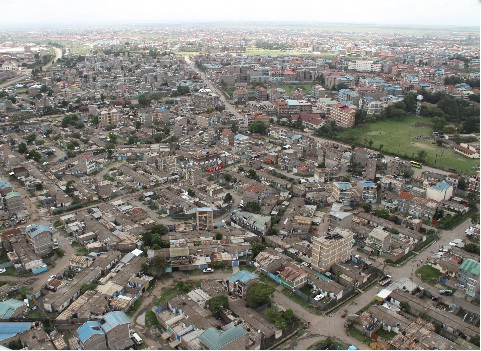If we always feel cheated in a relationship this is a must read…
In a relationship, married or not… You should read this.
Marriage.
“When I got home that night as my wife served dinner, I held her hand
and said, I’ve got something to tell you. She sat down and ate quietly.
Again I observed the hurt in her eyes.
Suddenly I didn’t know how to open my mouth. But I had to let her
know what I was thinking. I want a divorce. I raised the topic calmly.
She didn’t seem to be annoyed by my words, instead she asked me softly,
why?
I avoided her question. This made her angry. She threw away the
chopsticks and shouted at me, you are not a man! That night, we didn’t
talk to each other. She was weeping. I knew she wanted to find out what
had happened to our marriage. But I could hardly give her a satisfactory
answer; she had lost my heart to Jane. I didn’t love her anymore. I
just pitied her!
With a deep sense of guilt, I drafted a divorce agreement which
stated that she could own our house, our car, and 30% stake of my
company. She glanced at it and then tore it into pieces. The woman who
had spent ten years of her life with me had become a stranger. I felt
sorry for her wasted time, resources and energy but I could not take
back what I had said for I loved Jane so dearly. Finally she cried
loudly in front of me, which was what I had expected to see. To me her
cry was actually a kind of release. The idea of divorce which had
obsessed me for several weeks seemed to be firmer and clearer now.
The next day, I came back home very late and found her writing
something at the table. I didn’t have supper but went straight to sleep
and fell asleep very fast because I was tired after an eventful day with
Jane. When I woke up, she was still there at the table writing. I just
did not care so I turned over and was asleep again.
In the morning she presented her divorce conditions: she didn’t want
anything from me, but needed a month’s notice before the divorce. She
requested that in that one month we both struggle to live as normal a
life as possible. Her reasons were simple: our son had his exams in a
month’s time and she didn’t want to disrupt him with our broken
marriage.
This was agreeable to me. But she had something more, she asked me to
recall how I had carried her into out bridal room on our wedding day.
She requested that every day for the month’s duration I carry her out of
our bedroom to the front door ever morning. I thought she was going
crazy. Just to make our last days together bearable I accepted her odd
request.
I told Jane about my wife’s divorce conditions. . She laughed loudly
and thought it was absurd. No matter what tricks she applies, she has to
face the divorce, she said scornfully.
My wife and I hadn’t had any body contact since my divorce intention
was explicitly expressed. So when I carried her out on the first day, we
both appeared clumsy. Our son clapped behind us, daddy is holding mommy
in his arms. His words brought me a sense of pain. From the bedroom to
the sitting room, then to the door, I walked over ten meters with her in
my arms. She closed her eyes and said softly; don’t tell our son about
the divorce. I nodded, feeling somewhat upset. I put her down outside
the door. She went to wait for the bus to work. I drove alone to the
office.
On the second day, both of us acted much more easily. She leaned on
my chest. I could smell the fragrance of her blouse. I realized that I
hadn’t looked at this woman carefully for a long time. I realized she
was not young any more. There were fine wrinkles on her face, her hair
was graying! Our marriage had taken its toll on her. For a minute I
wondered what I had done to her.
On the fourth day, when I lifted her up, I felt a sense of intimacy
returning. This was the woman who had given ten years of her life to me.
On the fifth and sixth day, I realized that our sense of intimacy was
growing again. I didn’t tell Jane about this. It became easier to carry
her as the month slipped by. Perhaps the everyday workout made me
stronger.
She was choosing what to wear one morning. She tried on quite a few
dresses but could not find a suitable one. Then she sighed, all my
dresses have grown bigger. I suddenly realized that she had grown so
thin, that was the reason why I could carry her more easily.
Suddenly it hit me… she had buried so much pain and bitterness in her heart. Subconsciously I reached out and touched her head.
Our son came in at the moment and said, Dad, it’s time to carry mom
out. To him, seeing his father carrying his mother out had become an
essential part of his life. My wife gestured to our son to come closer
and hugged him tightly. I turned my face away because I was afraid I
might change my mind at this last minute. I then held her in my arms,
walking from the bedroom, through the sitting room, to the hallway. Her
hand surrounded my neck softly and naturally. I held her body tightly;
it was just like our wedding day.
But her much lighter weight made me sad. On the last day, when I held
her in my arms I could hardly move a step. Our son had gone to school. I
held her tightly and said, I hadn’t noticed that our life lacked
intimacy. I drove to office…. jumped out of the car swiftly without
locking the door. I was afraid any delay would make me change my mind…I
walked upstairs. Jane opened the door and I said to her, Sorry, Jane, I
do not want the divorce anymore.
She looked at me, astonished, and then touched my forehead. Do you
have a fever? She said. I moved her hand off my head. Sorry, Jane, I
said, I won’t divorce. My marriage life was boring probably because she
and I didn’t value the details of our lives, not because we didn’t love
each other anymore. Now I realize that since I carried her into my home
on our wedding day I am supposed to hold her until death do us apart.
Jane seemed to suddenly wake up. She gave me a loud slap and then
slammed the door and burst into tears. I walked downstairs and drove
away. At the floral shop on the way, I ordered a bouquet of flowers for
my wife. The salesgirl asked me what to write on the card. I smiled and
wrote, I’ll carry you out every morning until death do us apart.
That evening I arrived home, flowers in my hands, a smile on my face,
I run up stairs, only to find my wife in the bed – dead. My wife had
been fighting CANCER for months and I was so busy with Jane to even
notice. She knew that she would die soon and she wanted to save me from
the whatever negative reaction from our son, in case we push through
with the divorce.— At least, in the eyes of our son—- I’m a loving
husband….
The small details of your lives are what really matter in a
relationship. It is not the mansion, the car, property, the money in the
bank. These create an environment conducive for happiness but cannot
give happiness in themselves. So find time to be your spouse’s friend
and do those little things for each other that build intimacy. Do have a
real happy marriage!
If you don’t share this, nothing will happen to you.
If you do, you just might save a marriage. Many of life’s failures
are people who did not realize how close they were to success when they
gave up.”




